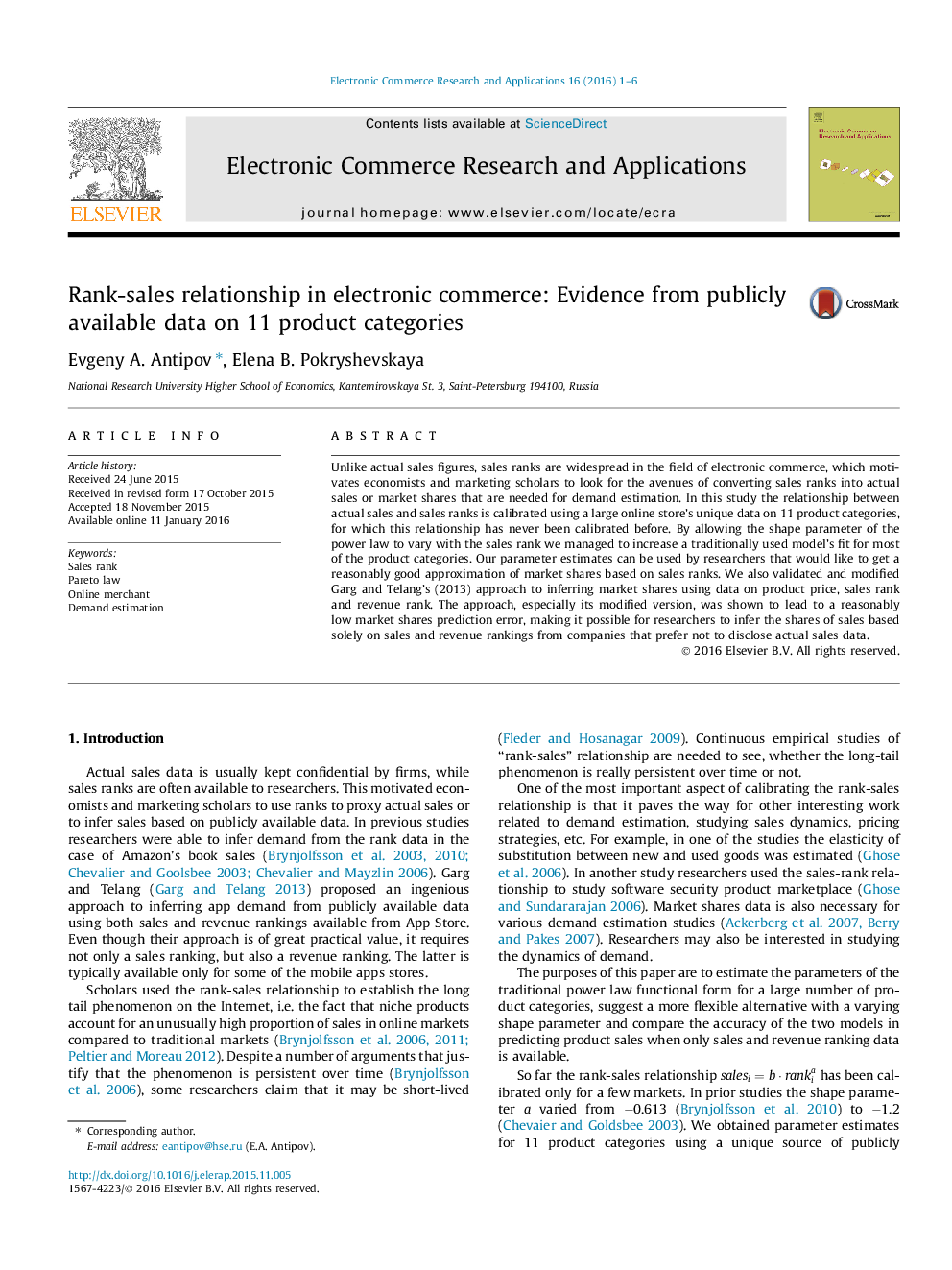| Article ID | Journal | Published Year | Pages | File Type |
|---|---|---|---|---|
| 379534 | Electronic Commerce Research and Applications | 2016 | 6 Pages |
•A unique sku-level dataset of product sales is obtained from an online merchant.•A modified sales-rank functional form is suggested.•The relationship between actual sales and sales ranks is calibrated for 11 products.•An approach for inferring product demand from publicly available data is modified.•Functional form modifications led to a decreased prediction error.
Unlike actual sales figures, sales ranks are widespread in the field of electronic commerce, which motivates economists and marketing scholars to look for the avenues of converting sales ranks into actual sales or market shares that are needed for demand estimation. In this study the relationship between actual sales and sales ranks is calibrated using a large online store’s unique data on 11 product categories, for which this relationship has never been calibrated before. By allowing the shape parameter of the power law to vary with the sales rank we managed to increase a traditionally used model’s fit for most of the product categories. Our parameter estimates can be used by researchers that would like to get a reasonably good approximation of market shares based on sales ranks. We also validated and modified Garg and Telang’s (2013) approach to inferring market shares using data on product price, sales rank and revenue rank. The approach, especially its modified version, was shown to lead to a reasonably low market shares prediction error, making it possible for researchers to infer the shares of sales based solely on sales and revenue rankings from companies that prefer not to disclose actual sales data.
